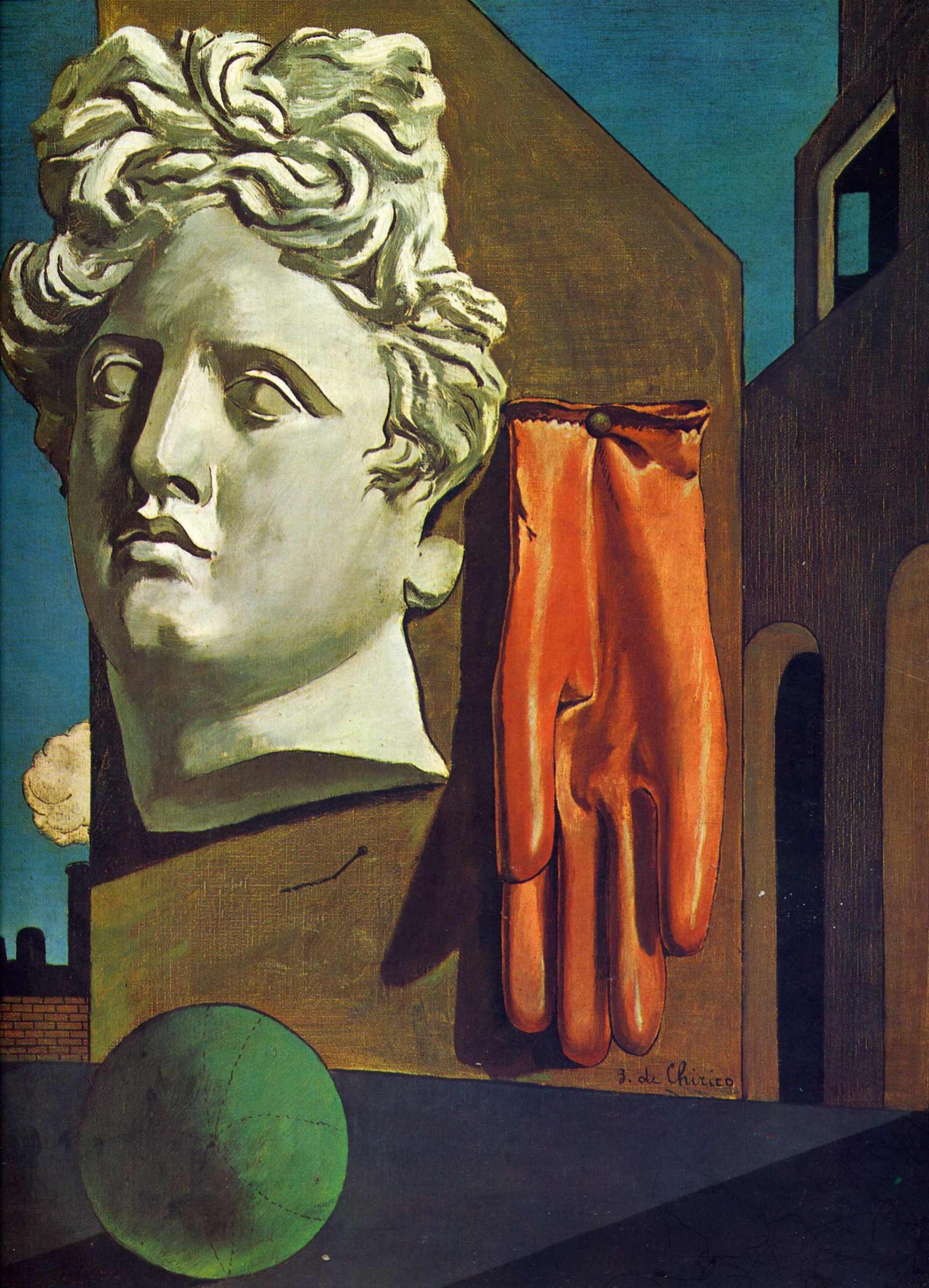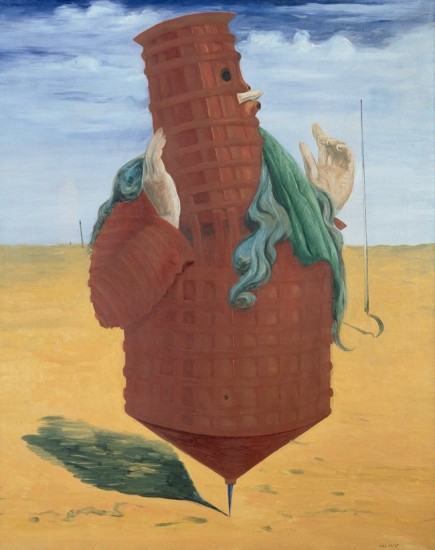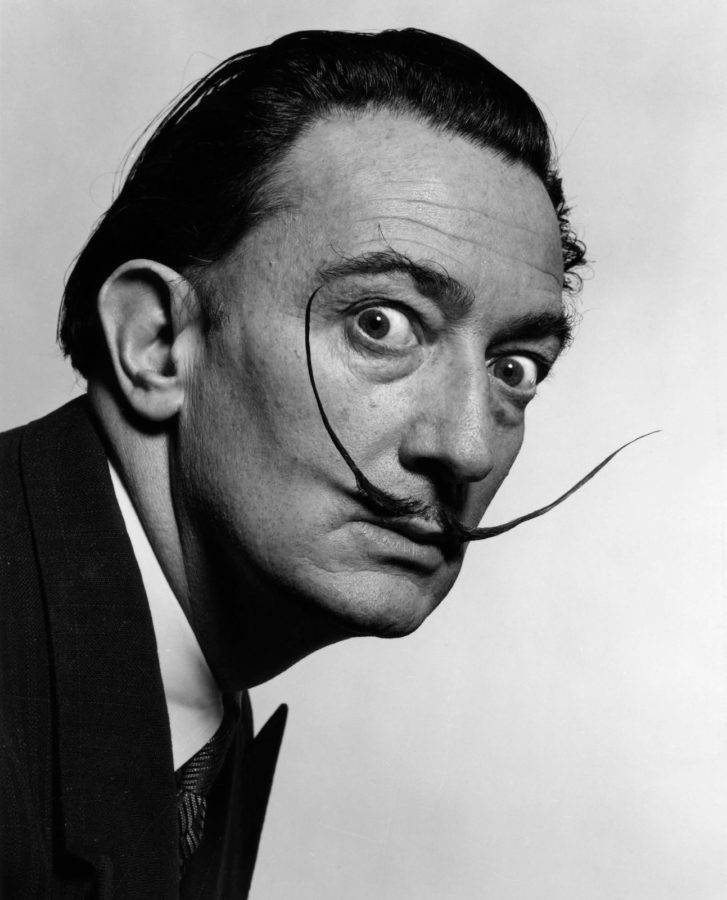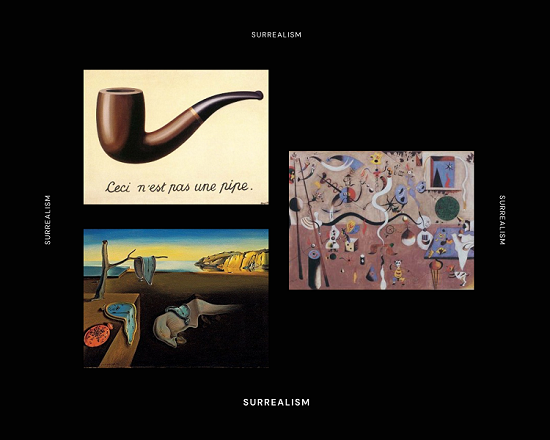10 TIMELESSSURREALIST PAINTINGS YOU SHOULD KNOW Surrealism The Song of Love, Surrealist Painting Art has become a part of this universe. So many art pieces are imbued with so much history, culture, emotion, and life that even the most replica couldn’t pin down their exact essence. Up until today, there are many art lovers still searching for its original sources – here and there. The fact that experiencing an original piece in person feels like looking at the world from the same, unique vantage point of view from which the artist once saw that nobody else could. It’s an intimate experience like none other, an almost surreal synchronization of your energy combined with the artists in a perfect moment in time. One of the most bizarre, intriguing yet very fascinating styles of art began to take shape in early 1920’s. It is also the time when Surrealism began its journey. Surrealism was known for its unique and intrigue connection between the artists and their artworks as its own focus is to delve more into deeper imagery and meanings of dreams as well as the subconscious imaginations. Have you seen these paintings somewhere? Let’s find out a little story behind these artworks! 1. Salvador Dalí Dream Caused by The Flight of a Bee Around a Pomegranate a Second Before Awakening, 1944 Salvador Dalí, Surrealist Artist Salvador Dalí is best-known and is remain as one of the greatest Surrealist artist – until today. The melting clocks or The Persistence of Memory is one of Dalí’s most famous painting that he ever produced. But his artwork did not stop until then, it goes far beyond this painting. Dream Caused by The Flight of a Bee Around a Pomegranate a Second Before Awakening is an oil painting on wood. It is one of the most remarkable examples of Surrealist art. The naked body figure in the painting is Gala, Dalí’s wife and muse, floating above a flat rock in a state of peaceful mind at the sea, possibly at Port Lligat. Dream Caused by The Flight of a Bee Around a Pomegranate a Second Before Awakening, 1944 Dalí depicts two suspended droplets of water and a pomegranate, a Christian symbol of fertility and resurrection. The bee and pomegranate of the title hover below Gala’s body, while in the upper left of the painting is a fish that seems to bursts out from its pomegranate, while the tigers seem poised to attack her, as well as the riffle with a bayonet that is about to sting her in the arm. But all these are meant as a symbols of unconscious desires. Above near the horizon, is an elephant carrying an obelisk on its back strides across the brilliant blue sea on a stilted leg. This creature was inspired by Bernini’s Elephant and Obelisk in Rome’s Piazza Santa Maria Sopra Minerva. For Dalí himself, this symbolizes as war and destruction. This painting represents a mood of terror and confusion which perfectly fit for nightmarish vision. The two tigers emerge together from the fish’s mouth, with a bar that threateningly might fall on the neck, which would cause her to wake up as she senses a danger, the buzz of the bee provokes the sensation of the sting which later on will wake Gala from her restful sleep. This state of immobility and suspended animal can be related to the artist’s newfound interest in nuclear fission and atomic energy. However, dream imagery was still at the core of Dalí’s esthetics as he still had a great interest to the ideas of Psychoanalysis by Sigmund Freud. Following his theory, Dalí understood the imagery of dreams to have multiple possible symbolic meanings and created paintings like this one that explored those complexities. Often, as in Dream Caused by The Flight of a Bee Around a Pomegranate a Second Before Awakening, sexuality was a central theme in these artwork. The painting is currently on display at the Thyssen-Bornemisza Museum in Madrid, Spain. 2. René Magritte The Treachery of Images, 1929 René Magritte, Surrealist Artist This painting was created by one and only René Magritte, one of the greatest Surrealist artists of all time. Magritte was known for his unique concept and ideas which he always put such a meaningful story behind all his masterpieces. For example, The Treachery of Images. It depicts simple imagery of the pipe and contrasting statement “Ceci n’est pas une pipe” or “This is not a pipe”, it also creates a three-way paradox out of the conventional notion that objects correspond to words and images. Moreover it raises an important point on the discord between language and meaning. Magritte’s artwork is quite simple, yet it triggers startling thoughts. The Treachery of Images, 1929 The persistent tension Magritte maintained during these years between nature and artifice, truth and fiction, reality and surreality is one of greatest achievement of his art. The Treachery of Images has become one of the most iconic images of Surrealism Movement. This painting is the introduction to Pop Art style and has inspired many conceptual artists in the late 20th century. It is now on display at Los Angeles County Museum of Art (LACMA), Los Angeles, California, USA. 3. Joan Miró The Tilled Field, 1923-1924 Joan Miró, Surrealist Artist The panting is widely considered to be Miró’s greatest artwork along with his painting, Harlequin’s Carnival. It closely resembles the overall manner that depicts his surrealist visions. The Tilled Field was created as a Surrealist view of his family’s Catalan farm, located in Mont-roig del Camp, Catalonia. The Tilled Field, 1923-1924 The painting is dominated by muted tones of yellow and brown. It divides into three areas by two horizontal lines, perhaps representing the sky, sea, and earth – and the decorative scattering of multicolored animals throughout were most likely inspired by medieval Spanish tapestries. This painting is the first example of Miró’s Surrealist vision. It is littered with a confused… Continue reading 10 Timeless Surrealist Paintings You Should Know
Tag: surrealist
Ubu Imperator Max Ernst
Surrealist Artist
Surrealist Artists Salvador Dalí Salvador Dalí [ 1904 – 1989 ] Surrealist artists – such as Salvador Dalí, René Magritte, Leonora Carrington, Joan Miró, Yves Tanguy and many others – seek to explore the unconscious mind and dreams as a way of creating art that asserted the value of it’s both. The artists found magic and beauty beyond world in the unexpected, the unconventional, and the uncanny of their deepest thoughts by illustrating it into something that is indescribable-yet-very-fascinating collection of artworks. However, for some artists – Surrealism is also used as a way to depict dream worlds or hidden psychological tensions. The following image is one of the most famous Surrealist artist in the world. Anyone who admires and loves painting probably know the man in the picture below. Scroll down to read more! Who is Salvador Dalí? About the artist Portrait of Salvador Dalí at age 4 He is, for sure, one of the man, the master of arts, Salvador Domingo Felipe Jacinto Dalí i Domènech, known as Salvador Dalí. Certainly, he is one of the most symbolic, and most celebrated artist of the Surrealist movement of all time. He is also one of the most influential figures in modern art. Dalí was born on May 11, 1904 in Figueres, near the Pyrenees Mountains, Spain. Growing up being surrounded by natures and cultures, he found many inspiration that later on it became his key paintings as he often included the scenery that he sees around into his artworks. Dalí has laid his heart in art and found love in it. His father and his mother greatly nurtured his interest in art since he was young. Both his parents built an art studio in Cadaqués, their summer home. Landscape Near Figueras (1910) is one of the earliest known artwork by Salvador Dalí. It was painted when he was six years old. At the age of 10, he had his first drawing lesssons that soon he took an art school at the San Fernando Academy of Art in Madrid, where he experienced with impressionist and pointillist styles. However, in 1926, when he was in his year-end at the academy, he refused to be examined in the theory of art and balked at his professors during the examanation. He announced, “I am very sorry. But I am infinitely more intelligent than these three professors, and I therefore refuse to be examined by them. I know this subject much too well”. As a result of this, he got expelled before graduation. Landscape Near Figueras [ 1910 ] After leaving art school, he soon went on trip to Paris where everything started and this, is where his life-changing, his journey began. Dalí visited Pablo Picasso in his studio and found a new inspiration and ideas which is called Cubism. Cubism is an art movement that was created by Pablo Picasso and Georges Braque in 1907. The style emphasized the flat, two-dimensional surface that can be viewed from multiple angles simultaneously. Later on, he has a great interest in Futurism, where he re-created motion and show objects from multiple angles. Dalí also had an interest in Psychoanalytic concepts of Sigmund Freud. After some time, he studied the theory and consequently began using Psychoanalytic methods of mining the subconscious to generate imagery. Joan Miró, a fellow from Catalan allied to some of the French Surrealist artists – such as Jean Arp, René Magritte, and Max Ernst. They found Dalí’s artwork very captivating and also very fond of his idea, especially in Psychoanalytic theory of Sigmund Freud. They tried to apply this methods into painting and writing. At that time, the Surrealists artists – knew that Dalí was well acquainted with Freud and his great ideas about sexual repression taking the form of dreams and delusions. As soon as Dalí found out about this, he was amazed with the Surrealists attempt to capture these dreams in paint. Dalí’s first serious work in Psychoanalytic concept was Apparatus and Hand (1927), which became his inimitable painting signature. Here take a look at the artwork! Apparatus and Hand [ 1927 ] In 1928, Dalí worked with Luis Buñuel on movie industry Un Chien Andalou (An Andalusian Dog). Due to the conflicts and remarks about the context of this film, Dalí’s popularity starts to fell and causing quite a stir with the Parisian Surrealists. However in 1929, The Surrealists sent Paul Éluard and his wife Gala, along with René Magritte and his wife Georgette to visit Dalí in Cadaques. Dalí met and fell in love with Gala. The two were drawn to each other and shortly after Gala decided to left Éluard for Dalí. The fact that she was ten years older than him, he didn’t mind it and even decided to marry her in 1934 and renewed their vows in 1958. Gala became Dalí’s lifelong, soulmate, and most important muse, as well as being his wife, his greatest passion and love, also business manager. Years later, Dalí moved to Paris and was invited by ‘The Surrealist Pops’, André Breton to join the movement. Salvador Dali and his wife, Gala In the early 1930s, Dalí took Breton’s theory of ‘automatism’ concept a step further by creating his own perspective called ‘Paranoiac-critical method’, which means an artist could use their subconscious through systematic irrational thought, hallucinations, and a self-induced paranoid state to facilitate and create a work of art. It is also known as a ‘second phase’ of Surrealism. Dalí would create ‘hand-painted dream photographs’ based on what he had witnessed. Most of his artwork shows an unusual-yet-very-unique painting. Although the objects were sometimes unrelated, rather confusing, but it still painted realistically. He believed that the viewers would find a deep connection and meaning with his artwork because after all, the subconscious language is universal, and “it speaks with the vocabulary of the great vital constants that is universally echoed in every human”. Dalí used this method for almost his entire life, and his most popular, well-known artwork was The Persistence of Memory… Continue reading Surrealist Artist
Surrealisme
Surrealism Style of art Surrealism Style of Art Surrealism is more than just an artistic style – it’s an artistic movement, gesture, created by the artist itself. In 1917, the term of ‘surrealist’ was first coined by the French avant-garde poet, Guilliame Apollinaire. He used the term of it in the program notes, called the ballet Parade for Jean Cocteau and Erik Satie, along with Léonide Massine and Pablo Picasso. Guillaume Apollinaire [ 1880 – 1918 ] However, André Breton, who is known as the ‘Pope’ of Surrealism, officially founded the movement when he published Manifeste du surréalisme in 1924. Breton defined Surrealism as dictation of thought in the absence of all control exerted by reason, outside all moral and aesthetic consideration. Surrealism was a means of reuniting conscious and unconscious realms of experience completely that both dreams and fantasies joined together to the rational world in “an absolute reality, a surreality” as he called it. Breton sees the unconscious as the fountain of the imagination, which he believed that this could be attained by poets and painters. In 1925, visual artists such as Giorgio De Chirico, Pablo Picasso, Francis Picabia, and Marcel Duchamp embraced Surrealism and also were recognized in Breton’s publication, “La Révolution Surréaliste.” André Beton [ 1896 – 1966 ] Surrealist artists aimed to focus on the unconscious mind in order to unlock their dreams, inner-mind, deepest-creativity, and imagination. Since the Surrealism were well-influenced by the psychoanalysis, they believed that the rational mind suppressed the power of their expression. Therefore, Surrealism suggested that the artists should be balanced and well-aware in both reason and rationality. These techniques became known as automatism or automatic writing, encouraging spontaneity and openness to it’s artist practices. A fundamental aspect of this ‘automatism’, means that one proposes to express or to act either verbally, or any other ways, in both thoughts and images that comes from it’s unconscious minds and dreams of the artist itself. Throughout the 1920s, the artists continued to explore the Surrealist concept in art, seeking for complete creative freedom. And that’s when the first exhibition of Surrealism were showcased in 1925 at the Galerie Pierre in Paris, titled “La Peinture Surréaliste”, demonstrating the whole visual components of the movement as it displayed an artwork by Jean Arp, André Masson, Paul Klee, Man Ray, Max Ernst, Pablo Picasso, Giorgio de Chirico, Joan Miro, and many other artists. Exhibition of Surrealism [ 1925 ] Since Surrealism emphasis on creative freedom, there are numbers of techniques were formed by Surrealist painters to helped capture the thoughts of its unconscious mind. Many Surrealist artists combined different kind of artistic styles in a single work, creating an uncertain imagery that is hardly to described by the viewers, as it did not provide much explanations on it’s artwork. This style of art aims to create an artwork that made the viewers think, and none of it has a solid answer. They wanted to build a perspective, a what-do-you-see-in-this-painting on a deeper level connection between the viewers and the artwork. Therefore, it has only a few characteristic that you may notice. And that is the beauty, the fascinating concept of Surrealism style of art. Over the years, Surrealism has gotten bigger and bigger and succeeded to attract world-wide writers, artists, photographers, and filmmakers that quickly became an international movement. It has exerted huge impact on the cultural life of many countries in the interwar years until later. The peak of the Surrealist happened in 1938, Exposition Internationale du Surréalisme or the International Surrealist Exhibition at Galérie Beaux-Arts in 140 Rue du Faubourg Saint-Honoré. The Gallery was divided into three sections, featuring paintings, objects, unsually decorated rooms, and re-designed mannequins. Exposition Internationale du Surréalisme [ 1938 ] The exhibition was held by many Surrealist artists. André Breton suggested to establish a different framework for displaying the artwork by creating an enchanting vibes of Surrealism. Himself and Nusch Éluard asked Marcel Duchamp to participated and design the exhibition, although he was not officially a part of the Surrealist movement. Invitation – Exposition Internationale du Surréalisme [ 1938 ] Duchamp, the designer, chose to exhibit the artwork in a dark atmosphere. Therefore the visitors were forced to use flashlights that was handed at the entrance in order to orient themselves in the darkness; this was made to built the sense of disorientation and surprise for the visitors. Visitors carrying flashlights – Exposition International du Surrealismé [ 1938 ] Moving on to the gallery. The first section was the lobby with the installation piece called Taxi Pluvieux (Rain cab) created by Salvador Dali. The second one was Plus Belles Rues de Paris (The most beautiful streets of Paris) contains of re-arranged Surrealist mannequins which was rented from a French manufacturer, while the last section was a center room arranged by Wolfgang Paalen and Marcel Duchamp. Many objects were positioned on pedestals of different size and the room was decorated with various items, that depict to follow a dreamlike path – at times amusing, at times disturbing – displaying the context of Surreal atmosphere. The corridor led to the main hall, a central space that resembled a grotto. The artworks were hung on the wall across the gallery, with an artificial pond with real water lilies and reeds on the pool, while the floor was covered with dead leaves. It was designed and created by Wolfgang Paalen. A thousand two-hundred of coal bags were hanging from the ceiling that were stuffed with newspaper but designed to leak coal dust on the visitors underneath. There were also four beds positioned in the corner of the room covered in satin quilts explicitly invited to abandon reality and symbolically enter the space of dreams, while in the middle stood a lit iron brazier that represent the unconscious. The sounds of cries, hysterical laughter and marching soldiers was played and filled the rooms through a loudspeaker. It increased the immersive, unsettling effect of the environment. The main hall – Exposition Internationale du Surréalisme [ 1938… Continue reading Surrealisme



